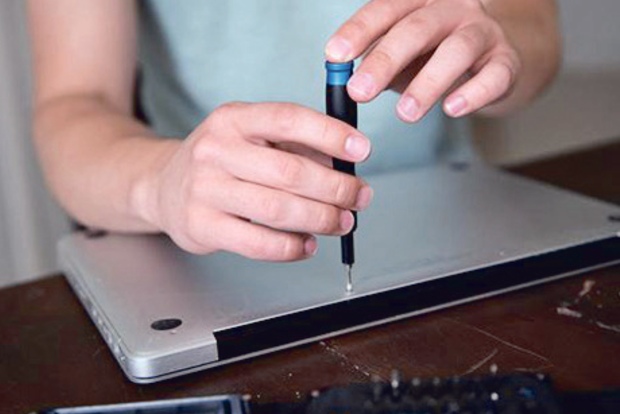Begin typing your search...
Reusable Tech for future: Call for right to e-repairs growing louder in EU
Most of our modern electronic devices end up on the scrap heap after only a few years. But as the push for a more circular economy gains traction, pressure is building for products that can be repaired and reused.

Chennai
When it comes to smartphone, tablet and laptop designs, thin is beautiful these days. The trade-off between style and lifetime, however, is often to the detriment of the latter, as reparability ranks low in the minds of manufacturers. “In the latest models, the battery and the display are often glued to the gadget’s body, which also makes it waterproof. It’s a low-cost compromise enabling manufacturers to focus on thin design rather than reparability. That cannot be achieved when you screw the parts together,” said Dorothea Kessler, communications director at iFixit Europe.
The Stuttgart, Germany-based non-profit organization is spearheading a drive of more than a million technicians and hobby repairers collaborating in a global online community demanding a “right to repair” for customers. After a new mobile gadget hits the market, the repair enthusiasts try to take it apart and reassemble its components. The aim of the exercise is to feed the organization’s Reparability Index with fresh data and scores from one to 10 points for gadgets.
Its newest smartphone survey shows two gadgets of alternative phone maker Fairphone clearly leading in terms of repair friendliness.
All other smartphones ranked, lost points due to their batteries and screen covers being glued together or attached with screws that could only be loosened with specialist tools.
“Our Reparability Index is intended to underscore the need for repairable products in a sustainable circular economy, and is meant to give customers advice for their purchasing decisions,” Kessler told DW.
How to undo adhesives?
Easy to repair devices are still niche products in many markets. Especially the latest generations of smartphones from big manufacturers, including Samsung and Huawei, lag hopelessly behind in the iFixit ranking; iPhone maker Apple is only marginally better.
In the eyes of manufacturers, says Matthias Stollberg, reparability is not so important and other concerns are obviously given priority. Stollberg is head of communications at Delo, a leading global producer of adhesives for electronic components based in Germany. “Our customers put a strong emphasis on durability. An accidental loosening of smartphone components is what they want to avoid by any means,” he told DW.
Stollberg says that the bonding agents used in smartphones must meet additional parameters like electric conductibility and transparency, which would make using removable parts amount to the proverbial “squaring of the circle.” He acknowledges though, that ungluing components such as displays and batteries was considered by manufacturers, but not for smaller parts like cameras.
Although Delo is currently working on more repair-friendly bonding agents, the technology has its limits, says Stollberg. Instead, he suggests mechanical methods, like scratching off the adhesive, or using a thin heated wire to liquefy the glue, but admits that the latter would work with glass and metal, but less with plastic.
Giving a medium-term perspective, the Delo executive expects water, acidic or solvent-based agents to help overcome the problem, but adds this would raise new challenges for water resistance as well as concerns for environmental and labour protection. Other possibilities include using ultraviolet light, ultrasound or even infrared rays.
— This article has been provided by Deutsche Welle
Visit news.dtnext.in to explore our interactive epaper!
Download the DT Next app for more exciting features!
Click here for iOS
Click here for Android
Next Story



